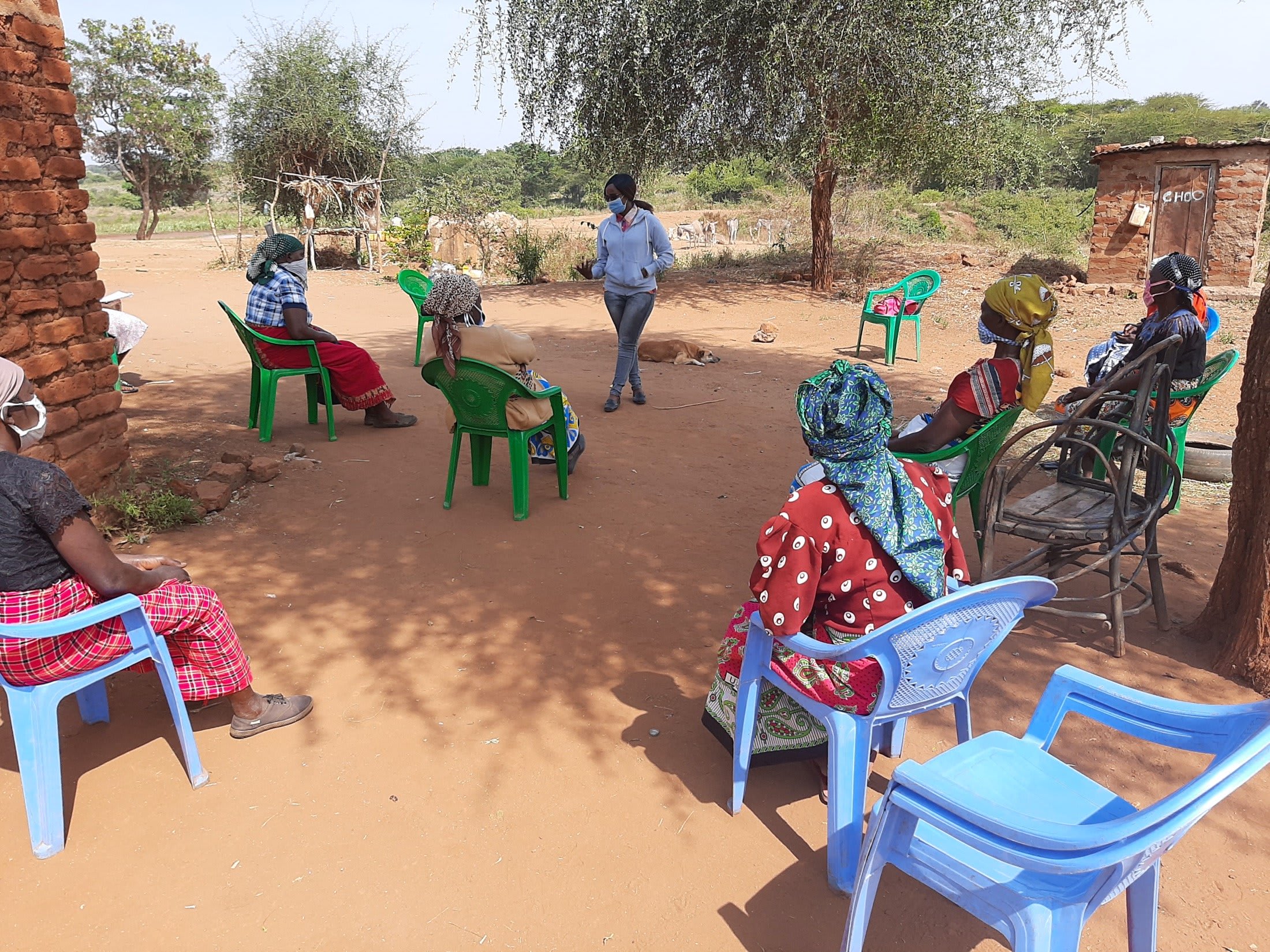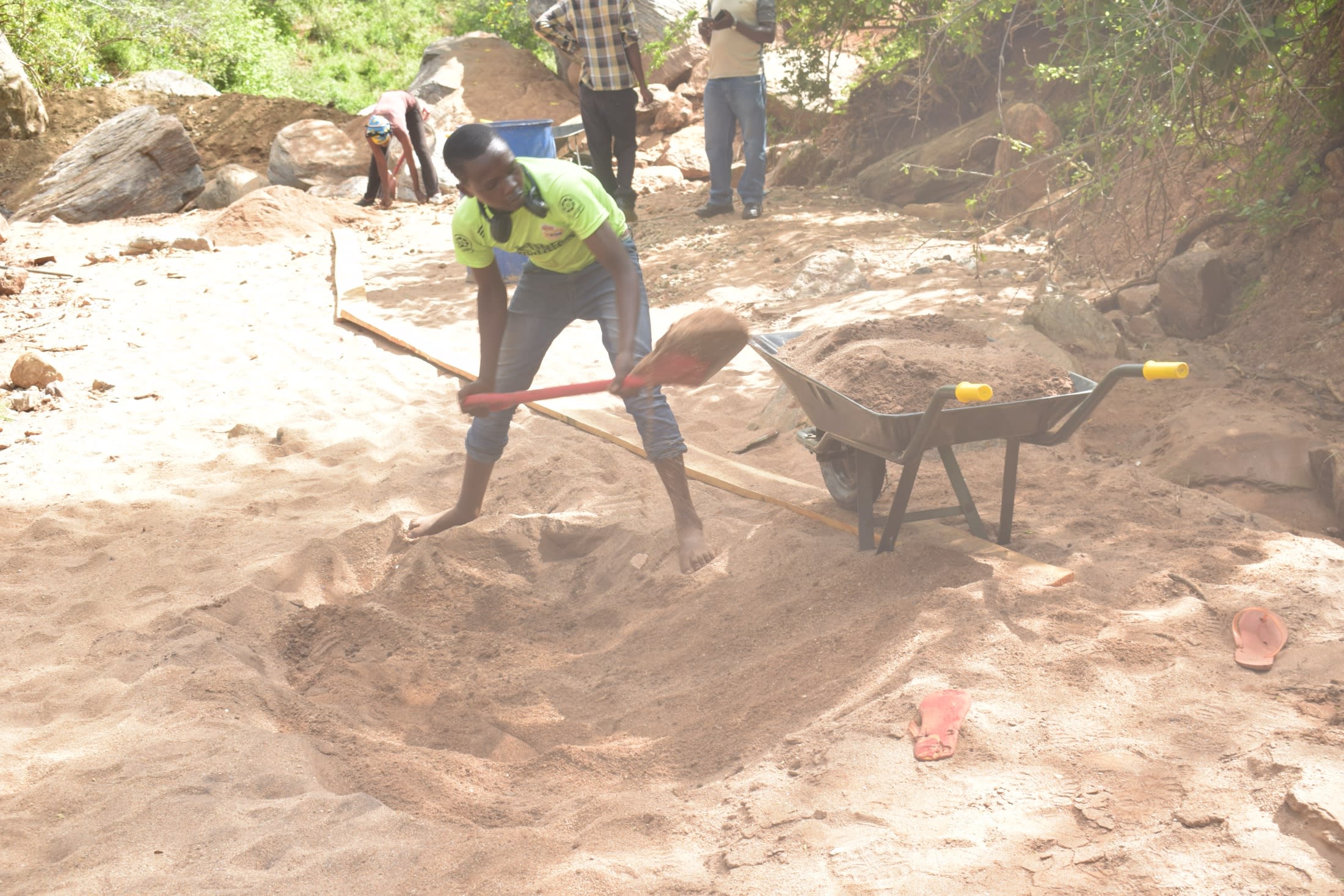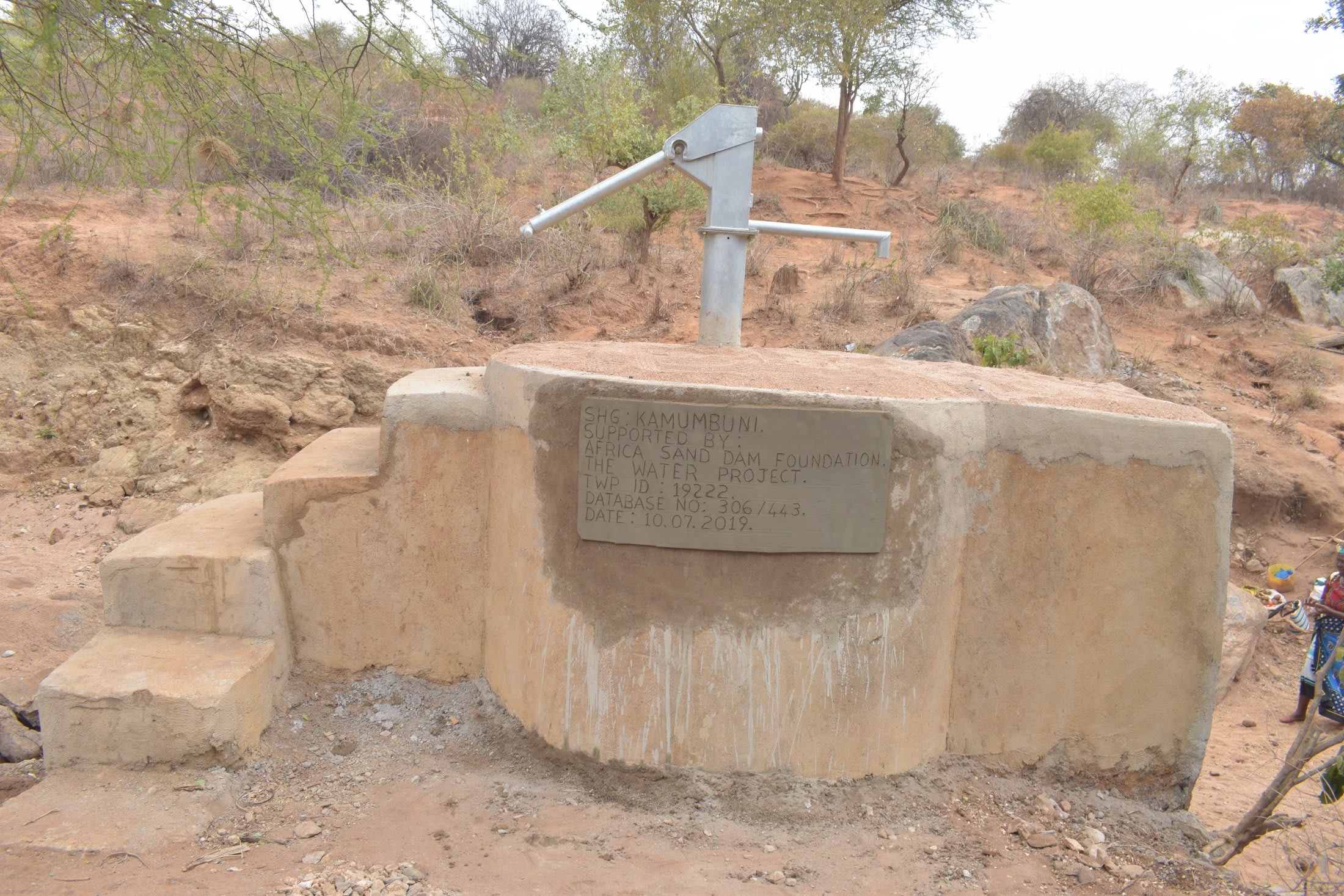July, 2020: COVID-19 Prevention Training Update at Kathuli Community
Our teams are working on the frontlines of the COVID-19 pandemic. Join us in our fight against the virus while maintaining access to clean, reliable water.
We are carrying out awareness and prevention trainings on the virus in every community we serve. Very often, our teams are the first (and only) to bring news and information of the virus to rural communities like Kathuli, Kenya.

We trained community members on the symptoms, transmission routes, and prevention of COVID-19.
Due to public gathering concerns, we worked with trusted community leaders to gather a select group of community members who would then relay the information learned to the rest of their family and friends.
We covered essential hygiene lessons:
- Demonstrations on how to build a simple handwashing station
- Proper handwashing technique
- The importance of using soap and clean water for handwashing
- Cleaning and disinfecting commonly touched surfaces including at the water point.

We covered COVID-19-specific guidance in line with national and international standards:
- Information on the symptoms and transmission routes of COVID-19
- What social distancing is and how to practice it
- How to cough into an elbow
- Alternative ways to greet people without handshakes, fist bumps, etc.
- How to make and properly wear a facemask.
During training, we installed a new handwashing station with soap near the community’s water point,
Due to the rampant spread of misinformation about COVID-19, we also dedicated time to a question and answer session to help debunk rumors about the disease and provide extra information where needed.
Water access, sanitation, and hygiene are at the crux of disease prevention. You can directly support our work on the frontlines of COVID-19 prevention in all of the communities we serve while maintaining their access to safe, clean, and reliable water.

December, 2019: Kathuli Community Hand-Dug Well Complete
Kathuli Community, Kenya now has a new source of water thanks to your donation. A hand-dug well was constructed adjacent to a sand dam (go here to check it out). The dam was constructed on the riverbed, which will build up sand to raise the water table and naturally filter water. Recent rains have helped the dam begin to build up sand and store water.
It could take up to 3 years of rain (because sometimes it only rains once a year!) for this sand dam to reach maximum capacity. As the sand dam matures and stores more sand, a supply of water will be available for drinking from the well. With this water, the surrounding landscape will become lush and fertile.
Hand-Dug Well
Construction for this well was a success!

We worked with the Kamumbuni Self-Help Group for this project. The members and their families contributed materials and physical labor to complete the project. In addition, they were trained on various skills such as bookkeeping, financial management, project management, group dynamics, and governance. We also conducted a hygiene and sanitation training to teach skills like soapmaking and to help improve behaviors such as handwashing.
When an issue arises concerning the water project, the group members are equipped with the necessary skills to rectify the problem and ensure it works appropriately. However, if the issue is beyond their capabilities, they can contact our team of field officers to assist them.
Hand-Dug Well Construction Process
We delivered the experts, materials, and tools, but the community helped get an extraordinary amount of work done too. They collected local materials to supplement the project, including sand, stones, and water.

The biggest challenge the community members faced during this process was getting the water needed for construction. The water was being drawn from more than 3 miles away. This greatly slowed down the pace of construction, illustrating the effort people here must undertake to get water and why this project will have such an immense and immediate impact on their lives. They persisted through the challenge, however, and the well finally came to fruition.
"We are very happy to have been blessed by God through this water project support. Water problems in our community are prevalent and it is the hope of everyone that this project will help solve the current water challenges we are going through," said Marth Kimanzi.
"Adequate access to water will make our locality vibrant both with life and economically."

A hole 7 feet in diameter is excavated up to a recommended depth of 25 feet. (Most hand-dug wells do not reach that depth due to the existence of hard rocks between 10-18 feet.)

The diameter shrinks to 5 feet when construction of the hand-dug well lining is completed. This lining is made of brick and mortar with perforations to allow for water to seep through. Sand builds up around the well walls, which will naturally filter the rainwater that is stored behind the dam.
Once the construction of the lining reaches ground level, a precast concrete slab is laid on top and joined to the wall using mortar. 4 bolts for the hand-pump are fixed on the slab during casting. The concrete needs to dry for 2 weeks before the pump is installed.

The mechanics arrive to install the pump as community members watch, learning how to manage simple maintenance tasks for themselves.
The well is then given another few days after installing the pump to allow the joints to completely dry. The pump was installed level with the top of the sand dam. As the dam matures, sand will build up to the top of the wall. Until then, people will climb the concrete steps to get their water.

New Knowledge
The hygiene and sanitation training with members of the self-help group and community members was organized by the field officer in charge of the Mbondoni area, Daniel Kituku. He communicated the day of the training at the site of sand dam construction as the members were working on the completion of the dam. The area village administrator was also informed on the planned training and invited community members to participate.

Attendance was as expected. All self-help group members turned up for the training as informed by the regional Field Officer, and other community members who are not part of the group felt the need to be part of the training as well and attended to get the knowledge being shared. The area assistant chief and village administrator also came.
The venue of the training was scheduled to be hosted in the homestead of Ruth Kilyungi, where all members agreed it was easy to access. The weather on days 1 and 2 was cold and windy, while on day 3 it was sunny. The level of participation was very good. The participants were always in a good mood, engaging each other while brainstorming and asking the trainer numerous questions.

The trainer conferred with the field staff about their previous visits to households and interviews with community members to determine which topics the community still could improve upon.
They decided to train on topics including health problems in the community; good and bad hygiene behaviors; how diseases spread and their prevention; choosing sanitation improvements; choosing improved hygiene behaviors; planning for behavioral change; handwashing; and soapmaking.

“This training will help us improve on our behavior and especially to reduce open defecation. We want to make our area an open defecation-free zone. It is a very important training that will trigger improvement on personal hygiene and good practices at home that will help us prevent the spread of diseases," said Martha Kimanzi.
One of the activities that stood out here was soapmaking. The attendees said that it was a special lesson to them because they learned new ideas that they had never before learned from anyone. They also appreciated the idea by saying that it was the best and the easiest way of generating income and improving hygiene.

This group of people seemed to immediately adopt the new behaviors taught, said our field staff afterward. We already witnessed discussions they were having after training about improving the hygiene of their area by stopping open defecation. With the assistance of the village administrator and the area assistant chief, we are hopeful that open defecation will stop and the protection of water at home will be done. If the action plan prepared by the entire group is followed, then the impact will be great.
"Once these changes are made, the issues of the common diseases in our area that have been a problem for years will reduce, thus reducing expenses incurred when seeking treatment," Mrs. Kimanzi said.
Thank you for making all of this possible!


 Protected Dug Well
Protected Dug Well
 Rehabilitation Project
Rehabilitation Project

































